Military Hospital
Convalescent (military)
The Brondesbury Park Military Hospital opened in March 1915 as an auxiliary hospital to the First London General Hospital in Camberwell. It had 14-22 beds for enlisted servicemen The number of beds gradually increased to 60).
The house, originally known as Restormel but renamed the Mission House, was on the corner of Christchurch Avenue and Brondesbury Park and had been in use as a residence for Roman Catholic clergy. It was the property of the Revd Dr Herbert Vaughan, who lent it to the War Office for use as a military hospital for the duration of the war. It had a large entrance hall, where a fire was always lit in winter, and a wide oak staircase. The sitting rooms, of noble proportions, on the ground floor had been turned into two wards, one of which opened on to a very large conservatory at the back of the building. The first and second floors contained seven wards, housing 2 to 6 patients in each. In fact, the whole house had been given over to the soldiers, with only one Sister sleeping on the premises.
The staff consisted of Miss Maude T. Thomas, the Commandant, and her sister, Miss F.T. Thomas, a qualified dispenser who also acted as the Quartermaster, 3 trained Sisters (one of whom acted as Matron) and a large number of members some 30 or 40 - from the London/144 Voluntary Aid Detachment. The kitchen was run by a superintendent and 4 to 6 helpers. There was a lift from the kitchen to the men's dining rooms on the first floor, but the staff had their own dining room, where they ate in two relays. The first floor also contained a sitting room for the Commandant and another for the Quartermaster, a Massage Room staffed by two masseuses (another masseur and 2 V.A.D. assistants were available when necessary). The house contained ample bathrooms for the patients and a linen room with a large, commodious cupboard with sliding doors. One of the bathrooms housed the sterilising equipment and there was a large cupboard well-stocked with dressings.
The garden, over 2 acres in size, contained a hard tennis court, a croquet lawn and a good-sized vegetable garden. A large Recreation Hut had been erected in the grounds and was furnished with sofas and lounges, a billiard table and a bagatelle board. At one end there was a raised stage for concert and theatrical performances. The inner half of the hut was used as a ward for the almost well. It had 12 beds, covered with red and blue counterpanes.
The Hospital's magazine With the Wounded began publication in November 1915, some six months after the Hospital had opened.
In March 1917 the Hospital was asked to increase its accommodation and, for this purpose, a large neighbouring property - Beversbrook - was lent by its owner, Mr Stanley Gibbs. This annexe, with 4 acres of grounds, provided 50 beds and opened in July 1917. The Hospital then had 120 beds.
Both auxiliary military hospitals closed at the end of March 1919.
Present status (March 2011)
The house was demolished long ago, but the gate posts and boundary wall remain.
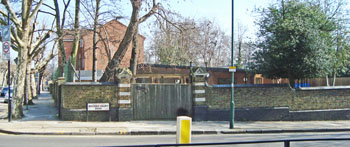
Mission House no longer survives, but the gate posts and boundary wall are still in evidence.
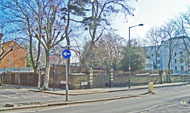
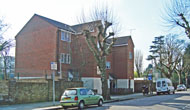
The corner site of the house now appears to be part of the Avenue Primary School grounds, with the entrance in The Avenue (left). New housing on part of the grounds on Christchurch Avenue (right).
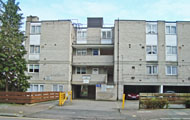

The site of Beversbrook is now occupied by Moatfield, an apartment block.
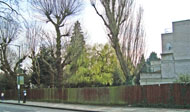
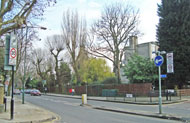
Looking across Brondesbury Park from the Mission House site to the Beversbrook site (left). The grounds of Beversbrook ran along Brondesbury Avenue to The Avenue (right).

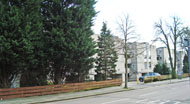
The end of the original plot of Beversbrook on the corner of The Avenue and Brondesbury Park (left). Looking along Brondesbury Park from The Avenue towards the site of Beversbrook. The Hospital in Mission House would have been just to the right of the image (right).
(Author unstated) 1917 Editorial. As others see us. With the Wounded 5, 1-2.
(Author unstated) 1917 List of the Various Hospitals Treating Military Cases in the United Kingdom. London, H.M.S.O.
Valentine KJ 1994 Willesden at War. Vol 1: The Impact on the Community. Self-published.
http://frontforum.westernfrontassociation.com
http://rcnarchive.rcn.org.uk (1915)
http://rcnarchive.rcn.org.uk (1920)
www.kentvad.org
www.london-gazette.co.uk
www.prescot-rollofhonour.info
www.rootsweb.ancestry.com (1)
www.rootsweb.ancestry.com (2)
Return to home page